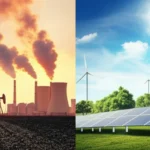Support our educational content for free when you purchase through links on our site. Learn more
Types of Conservation: Exploring the Many Ways to Protect Our Planet [2024]
Did you know that there are various types of conservation that play a crucial role in preserving our planet’s biodiversity and natural resources? From environmental conservation to animal and marine conservation, each type serves a unique purpose in safeguarding our ecosystems. In this article, we will delve into the different types of conservation, their significance, and how they contribute to a healthier and more sustainable world. So, let’s dive in and explore the fascinating world of conservation!
Table of Contents
- Quick Answer
- Quick Tips and Facts
- Background: Understanding the Importance of Conservation
- Exploring the Types of Conservation
- FAQ
- Conclusion
- Recommended Links
- Reference Links
Quick Answer
Conservation is the practice of protecting and preserving Earth’s natural resources for present and future generations. It encompasses various types, including environmental conservation, animal conservation, marine conservation, and human conservation. Each type plays a vital role in maintaining the delicate balance of our ecosystems and ensuring a sustainable future. By adopting conservation practices, we can contribute to the well-being of our planet and all its inhabitants.
CHECK PRICE on:
- Environmental Conservation Products
- Animal Conservation Products
- Marine Conservation Products
- Human Conservation Products
Quick Tips and Facts
- Biodiversity refers to the variety of living organisms on Earth, including animals, plants, microorganisms, and the ecosystems they inhabit.
- There are four significant levels of biodiversity: genetic diversity, species diversity, ecosystem diversity, and global biodiversity.
- Biodiversity conservation aims to protect and sustainably manage these levels of biodiversity to ensure the long-term well-being of our planet.
- The three primary goals of biodiversity conservation are to safeguard and preserve species diversity, manage ecosystems sustainably, and restore ecological processes and life support systems.
- The three “R’s” of resource conservation are Reduce, Reuse, and Recycle, which help minimize waste and promote sustainable resource management.
Background: Understanding the Importance of Conservation
Conservation is not just a buzzword; it is a fundamental practice that ensures the well-being of our planet and future generations. By protecting and preserving our natural resources, we can maintain the delicate balance of ecosystems and promote a sustainable future. Conservation efforts encompass a wide range of activities, from preserving habitats and species to managing resources responsibly. Let’s explore the different types of conservation and their significance in more detail.
Exploring the Types of Conservation
1. Environmental Conservation: Protecting Our Natural Environment
Environmental conservation focuses on safeguarding the natural environment from degradation caused by human activities. It involves preserving ecosystems, protecting biodiversity, and promoting sustainable practices. By conserving our natural environment, we can mitigate the negative impacts of pollution, deforestation, and habitat destruction. This type of conservation plays a crucial role in maintaining the health and functionality of our ecosystems.
2. Animal Conservation: Safeguarding Our Precious Wildlife
Animal conservation aims to protect and preserve endangered species and their habitats. It involves efforts to prevent the extinction of vulnerable animals and promote their long-term survival. Animal conservation organizations work tirelessly to protect habitats, combat poaching, and raise awareness about the importance of preserving wildlife. By safeguarding our precious wildlife, we can maintain the delicate balance of ecosystems and prevent the loss of biodiversity.
3. Marine Conservation: Preserving Our Oceans and Seas
Marine conservation focuses on the preservation and sustainable management of marine ecosystems. It aims to protect marine biodiversity, prevent overfishing, and mitigate the impacts of pollution and climate change on our oceans and seas. By implementing measures such as marine protected areas and sustainable fishing practices, we can ensure the health and resilience of marine ecosystems. Marine conservation is crucial for maintaining the well-being of marine species and the livelihoods of coastal communities.
4. Human Conservation: Balancing Human Activities and Nature
Human conservation involves finding a balance between human activities and the preservation of nature. It recognizes that humans are an integral part of ecosystems and aims to promote sustainable practices that minimize negative impacts on the environment. Human conservation encompasses responsible resource management, sustainable agriculture, and eco-friendly technologies. By adopting sustainable lifestyles and practices, we can coexist harmoniously with nature and ensure a healthier planet for future generations.
FAQ
What are two types of conservation?
There are various types of conservation, but two significant types are environmental conservation and animal conservation. Environmental conservation focuses on protecting the natural environment from degradation caused by human activities, while animal conservation aims to safeguard endangered species and their habitats.
What are the 3 strategies of conservation?
The three primary strategies of conservation are:
- Protecting and preserving biodiversity and ecosystems.
- Promoting sustainable resource management.
- Restoring and rehabilitating degraded ecosystems.
What are the three methods of conservation?
The three methods of conservation are:
- In-situ conservation: Protecting species and habitats in their natural environment.
- Ex-situ conservation: Preserving species outside their natural habitat, such as in zoos or botanical gardens.
- Community-based conservation: Involving local communities in conservation efforts and empowering them to protect their natural resources.
What are the 4 pillars of conservation?
The four pillars of conservation are:
- Sustainable use: Ensuring the responsible and sustainable use of natural resources.
- Ecosystem restoration: Rehabilitating and restoring degraded ecosystems.
- Species protection: Safeguarding endangered species and their habitats.
- Environmental education: Raising awareness and educating the public about the importance of conservation.
Conclusion
Conservation is not just a responsibility; it is an opportunity to create a better future for our planet and all its inhabitants. By understanding and embracing the different types of conservation, we can contribute to the preservation of biodiversity, the protection of ecosystems, and the sustainable management of our natural resources. Whether it’s through environmental conservation, animal conservation, marine conservation, or human conservation, each type plays a vital role in ensuring a healthier and more sustainable world. Let’s join hands and make a positive impact on our planet through conservation efforts.
Remember, every small action counts. By reducing waste, supporting eco-conscious brands, and making sustainable choices, you can become a conservation champion in your own right. Together, we can create a greener and healthier planet for generations to come.
Recommended Links
- Eco-Conscious Brands
- Green Businesses
- Environmentally Friendly Products
- Environmental Advocacy
- 15.5 Ways to Preserve Natural Resources in 2024








